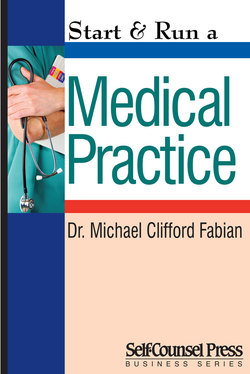Читать книгу Start & Run a Medical Practice - Michael Clifford Fabian - Страница 10
2.3 Dentistry
ОглавлениеThe dentistry field is very similar to medicine in so many ways, although the equipment needed to set up a dental office is vastly more complex and expensive than the average medical office. There are, however, some exceptions in the medical field in which cost can be comparable to a dentist’s office; ophthalmology and cosmetic surgery being two such examples. I have a dentist friend who has always been envious of the minimum start-up cost of an average medical doctor’s practice compared to that of a dentist!
I am aware of several individuals who have struggled between choosing a career in medicine versus dentistry. The medical school and dental school curriculum are so much alike, especially during the earlier years of training. Many universities across the globe combine the initial stages of the training of medical and dental students and integrate their initial basic science training. In fact, some schools have a combined college of medicine and dentistry with a single integrated administration.
I think everyone who is reading this book is very familiar with what dentists do, or at least I hope so! However, I am not sure if everyone is aware of the scope of their practice and know that dentists can specialize in many areas, where there is little differentiation in the way they practice compared to their medical colleagues. Oro-maxillo-facial surgery (otherwise known as oral surgery) is one such example. Dental surgeons typically do an additional four years of training after dental school and spend much of their time gaining exposure to medicine alongside their medical trainee colleagues. They operate, admit their patients, do surgery, and take care of them just like medical surgeons. The procedures they do are complex and can include cosmetic or reconstructive surgery of the head and neck. It is not uncommon for these highly trained surgeons to be dually qualified as both dentists and physicians, including their extra training in oral surgery.
There are times in which I have closely interacted with dentists as an otolaryngologist. Patients who have snoring and sleep apnea (a condition in which a person stops breathing while he or she is sleeping) often go to an otolaryngologist. For example, I consult a patient, Jay, with this problem and suspect that a large part of the problem is due to a lower jaw that is abnormally developed and poorly positioned. In addition, while Jay does not realize that the jaw problem is related to the snoring, he admits that this has bothered him cosmetically during the past decade. I refer Jay to the oral surgeon, who is able to surgically correct the deformity both from a functional and cosmetic aspect. After all the necessary investigations and opinions, Jay decides to proceed with the surgery. He is in the hospital for a couple of days after the surgery and all his care is managed by the oral surgeon. Many people do not realize that dentists can function in this capacity.
In the end I had a happy patient who was sleeping better and was more confident about his appearance. Jay’s success was largely due to the collaboration of the different professionals who came up with the best management plan unique for him. This example demonstrates how much the two professions overlap with similar interests, concerns, office dynamics, and most importantly for the benefit of the patient.
